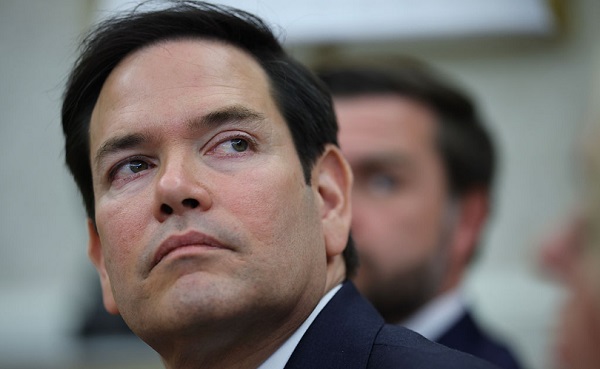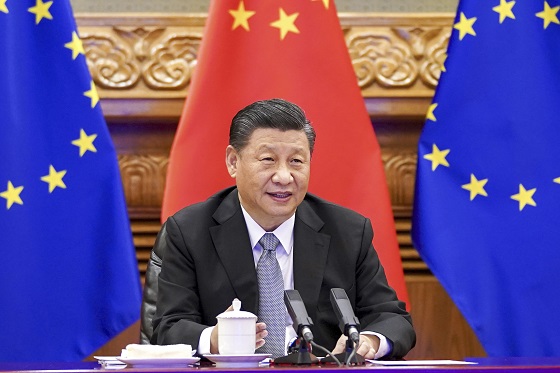Alberta
Edmonton Police charge 19 year old with trafficking gun used to kill Constables Jordan and Ryan

From the Edmonton Police Service
Charges laid in line of duty deaths
The EPS Firearms Investigations Unit (FIU) has completed their investigation into the origins of the firearm used in the Mar. 16, 2023, officer deaths.
Following the shooting deaths of Const. Brett Ryan and Const. Travis Jordan, FIU launched an investigation into the origins of the gun used by the 16-year-old male shooter.
Early in the investigation, detectives determined a bullet cartridge casing recovered from the scene of a Mar. 12, 2023, shooting at a nearby restaurant (133 Street and 114 Avenue) was forensically matched to the firearm that was recovered at the 132 Street and 114 Avenue apartment where both officers were tragically murdered. Investigators have since confirmed that the suspect in both shootings was the same.
Following several months of extensive investigation, FIU determined that Dennis Okeymow, 19, trafficked the firearm used in both shootings directly to the 16-year-old male shooter prior to Mar. 12.
On. Thursday, Nov. 23, 2023, police conducted search warrants on Okeymow’s residence, vehicles and cell phone. Okeymow was arrested without incident from the residence and police seized a stolen loaded handgun, ammunition, illegal drugs, $10,000 in cash and other items indicative of drug trafficking.
Okeymow is charged with:
- manslaughter (x3) and criminal negligence causing death (x3) in relation to the deaths of Const. Ryan, Const. Jordan and the 16-year-old male shooter
- criminal negligence causing bodily harm (x2) in relation to the man injured in the restaurant shooting on Mar. 12 and the youth’s mother, who was injured during the Mar. 16 shooting
- firearms trafficking
- unauthorized possession of a firearm
- possession of a restricted firearm with ammunition
- ·other drug trafficking related charges
“In my 20 years in this career, this is the most complex and tragic file I have worked on,” says Staff Sergeant Eric Stewart with the EPS Guns and Gangs Section. “It’s heartbreaking that the trafficking of a firearm has led to multiple deaths and life-altering injuries.”
“The trauma suffered by the impacted families as a result of this one simple transaction is unthinkable.”
FIU would like to thank the RCMP, the Calgary Police Service (CPS) and the Alberta Law Enforcement Response Team (ALERT) and the many dedicated members of the EPS who assisted with this investigation.
Background information
On Sunday, Mar. 12, 2023, at approximately 12:25 a.m., a lone male suspect entered a pizza restaurant in the area of 133 Street and 114 Avenue carrying a firearm. The suspect shot a male employee and then fled the location. EMS attended and transported the injured 55-year-old male to hospital with serious life-threatening injuries.
At approximately 12:47 a.m. on Thursday, Mar. 16, 2023, Const. Travis Jordan and Const. Brett Ryan responded to a family dispute call in an apartment complex near 114 Avenue and 132 Street.
When the two officers arrived, they were met by a 55-year-old female complainant outside of the complex. The two officers then responded to the suite where she resided with her 73-year-old male partner and their 16-year-old son.
Immediately upon arriving at the suite, both constables were shot multiple times by the youth and were immediately incapacitated. The youth then reportedly shot his mother before turning the firearm on himself, taking his own life. The father was not physically injured during the shootings. Neither officer discharged their firearm.
Following 911 calls by multiple reporters, additional police and EMS arrived. One of the injured officers was transported in a police vehicle to hospital, while the other injured officer was taken by ambulance. The female complainant was taken by ambulance to hospital. Soon after arriving at the hospital, both officers were declared deceased.
On Saturday, Mar. 18, 2023, the Office of the Chief Medical Examiner in Edmonton conducted autopsies on both officers. In both cases the cause of death was confirmed to be gunshot wounds with the manner of death being homicide.
On Mar. 22, 2023, the Edmonton Medical Examiner confirmed that the 16-year-old male shooter’s cause of death was a single gunshot wound to the head consistent with being self-inflicted.
The 55-year-old man shot in the restaurant on Mar. 12 survived, but suffered life-altering injuries. The youth’s mother continues to recover from her injuries.
Alberta
Red Deer Justice Centre Grand Opening: Building access to justice for Albertans

The new Red Deer Justice Centre will help Albertans resolve their legal matters faster.
Albertans deserve to have access to a fair, accessible and transparent justice system. Modernizing Alberta’s courthouse infrastructure will help make sure Alberta’s justice system runs efficiently and meets the needs of the province’s growing population.
Alberta’s government has invested $191 million to build the new Red Deer Justice Centre, increasing the number of courtrooms from eight to 12, allowing more cases to be heard at one time.
“Modern, accessible courthouses and streamlined services not only strengthen our justice
system – they build safer, stronger communities across the province. Investing in the new Red Deer Justice Centre is vital to helping our justice system operate more efficiently, and will give people in Red Deer and across central Alberta better access to justice.”

Government of Alberta and Judiciary representatives with special guests at the Red Deer Justice Centre plaque unveiling event April 22, 2025.
On March 3, all court services in Red Deer began operating out of the new justice centre. The new justice centre has 12 courtrooms fully built and equipped with video-conference equipment to allow witnesses to attend remotely if they cannot travel, and vulnerable witnesses to testify from outside the courtroom.
The new justice centre also has spaces for people taking alternative approaches to the traditional courtroom trial process, with the three new suites for judicial dispute resolution services, a specific suite for other dispute resolution services, such as family mediation and civil mediation, and a new Indigenous courtroom with dedicated venting for smudging purposes.
“We are very excited about this new courthouse for central Alberta. Investing in the places where people seek justice shows respect for the rights of all Albertans. The Red Deer Justice Centre fills a significant infrastructure need for this rapidly growing part of the province. It is also an important symbol of the rule of law, meaning that none of us are above the law, and there is an independent judiciary to decide disputes. This is essential for a healthy functioning democracy.”
“Public safety and access to justice go hand in hand. With this investment in the new Red Deer Justice Centre, Alberta’s government is ensuring that communities are safer, legal matters are resolved more efficiently and all Albertans get the support they need.”
“This state-of-the-art facility will serve the people of Red Deer and surrounding communities for generations. Our team at Infrastructure is incredibly proud of the work done to plan, design and build this project. I want to thank everyone, at all levels, who helped make this project a reality.”
Budget 2025 is meeting the challenge faced by Alberta with continued investments in education and health, lower taxes for families and a focus on the economy.

Quick facts
- The new Red Deer Justice Centre is 312,000 sq ft (29,000 m2). (The old courthouse is 98,780 sq ft (9,177 m2)).
- The approved project funding for the Red Deer Justice Centre is about $191 million.
Alberta
CPP another example of Albertans’ outsized contribution to Canada

From the Fraser Institute
By Tegan Hill
Amid the economic uncertainty fuelled by Trump’s trade war, its perhaps more important than ever to understand Alberta’s crucial role in the federation and its outsized contribution to programs such as the Canada Pension Plan (CPP).
From 1981 to 2022, Albertan’s net contribution to the CPP—meaning the amount Albertans paid into the program over and above what retirees in Alberta received in CPP payments—was $53.6 billion. In 2022 (the latest year of available data), Albertans’ net contribution to the CPP was $3.0 billion.
During that same period (1981 to 2022), British Columbia was the only other province where residents paid more into the CPP than retirees received in benefits—and Alberta’s contribution was six times greater than B.C.’s contribution. Put differently, residents in seven out of the nine provinces that participate in the CPP (Quebec has its own plan) receive more back in benefits than they contribute to the program.
Albertans pay an outsized contribution to federal and national programs, including the CPP because of the province’s relatively high rates of employment, higher average incomes and younger population (i.e. more workers pay into the CPP and less retirees take from it).
Put simply, Albertan workers have been helping fund the retirement of Canadians from coast to coast for decades, and without Alberta, the CPP would look much different.
How different?
If Alberta withdrew from the CPP and established its own standalone provincial pension plan, Alberta workers would receive the same retirement benefits but at a lower cost (i.e. lower CPP contribution rate deducted from our paycheques) than other Canadians, while the contribution rate—essentially the CPP tax rate—to fund the program would likely need to increase for the rest of the country to maintain the same benefits.
And given current demographic projections, immigration patterns and Alberta’s long history of leading the provinces in economic growth, Albertan workers will likely continue to pay more into the CPP than Albertan retirees get back from it.
Therefore, considering Alberta’s crucial role in national programs, the next federal government—whoever that may be—should undo and prevent policies that negatively impact the province and Albertans ability to contribute to Canada. Think of Bill C-69 (which imposes complex, uncertain and onerous review requirements on major energy projects), Bill C-48 (which bans large oil tankers off B.C.’s northern coast and limits access to Asian markets), an arbitrary cap on oil and gas emissions, numerous other “net-zero” targets, and so on.
Canada faces serious economic challenges, including a trade war with the United States. In times like this, it’s important to remember Alberta’s crucial role in the federation and the outsized contributions of Alberta workers to the wellbeing of Canadians across the country.
-

 2025 Federal Election22 hours ago
2025 Federal Election22 hours agoStudy links B.C.’s drug policies to more overdoses, but researchers urge caution
-

 2025 Federal Election2 days ago
2025 Federal Election2 days agoPolice Associations Endorse Conservatives. Poilievre Will Shut Down Tent Cities
-

 conflict2 days ago
conflict2 days agoMarco Rubio says US could soon ‘move on’ from Ukraine conflict: ‘This is not our war’
-

 Business2 days ago
Business2 days agoChinese firm unveils palm-based biometric ID payments, sparking fresh privacy concerns
-

 Alberta2 days ago
Alberta2 days agoRed Deer Justice Centre Grand Opening: Building access to justice for Albertans
-

 Business2 days ago
Business2 days agoTrump: China’s tariffs to “come down substantially” after negotiations with Xi
-

 Business2 days ago
Business2 days agoTrump considers $5K bonus for moms to increase birthrate
-

 Business23 hours ago
Business23 hours agoIs Government Inflation Reporting Accurate?




